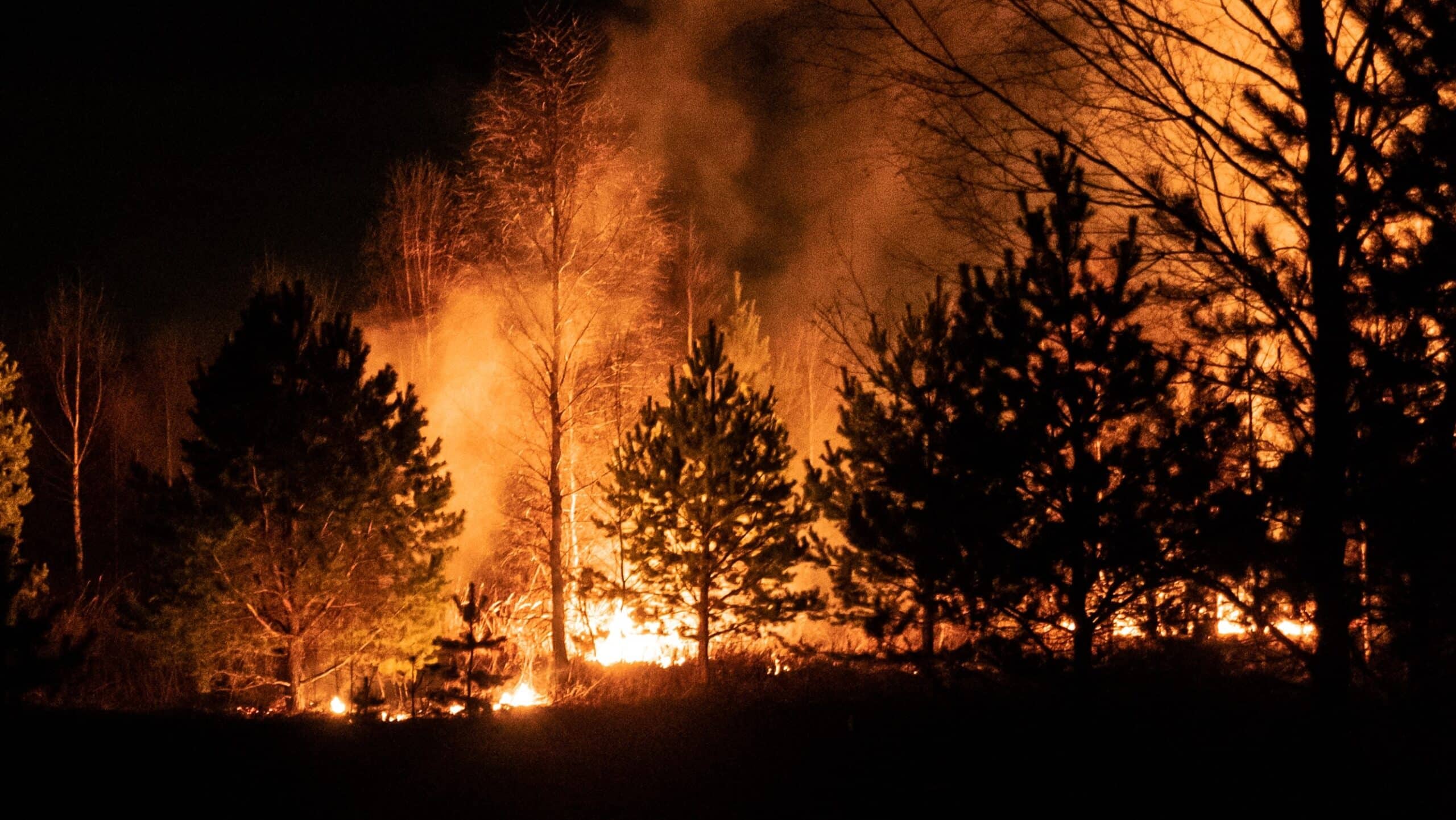Climate Change Is Increasing Wildfire Risks for Forests. What Can We Do About It?

Recent wildfires in Hawaii and in many parts of Canada underscore the importance of wildfire prevention and management. Research from NC State is helping us better understand – and possibly mitigate – increased risks for forests associated with climate change, including from wildfires.
While wildfires are not necessarily new, their frequency, size, duration and intensity are “pretty readily” linked with a changing climate, according to Robert Scheller, associate dean of North Carolina State University’s College of Natural Resources and professor of forestry and environmental resources.
“You can see the frequency of wildfire events, and the area burned, is closely linked to temperature and precipitation,” Scheller said. “Fuels don’t burn very well when it’s really wet. They burn fantastically when it’s warm and dry. Those are the basics. If there is more drought, and higher temperatures in the future, there will be more fire.”
Scheller uses computer modeling to understand risks for forests from wildfires, drought and insects in the future under climate change. He has been involved in studies on everything from estimating tree mortality by wildfire in the Southern Appalachian mountains to projecting the benefit of efforts to reduce fuel loads in forests of California.
His work not only offers a glimpse at what wildfire risks might look like under climate change, but also offers insight into the costs and benefits of solutions for mitigating those risks. The Abstract spoke to Scheller about his work and findings from a few recent studies.
The Abstract: How do you use computer modeling to study wildfires?
Robert Scheller: We have a lot of satellite data, so we know a lot about landscapes today. Next, we really want to understand landscapes in the future. What we want to know is: Should we be managing landscapes differently? What could we be doing to influence the future? To do that, we use a software tool, based on empirical data and complex algorithms, called LANDIS-II to explore different futures, and understand what we could be doing differently, and what the real risks are to landscapes. It’s just the computer doing math, but it does produce a myriad of maps that show potential futures. Like SimCity, it’s spatial, but we’re simulating events that happen in forests. Another way to think about it is like a digital twin of a landscape.
TA: What makes your approach unique?
Scheller: One thing most models don’t do is capture human ignitions of wildfire versus lightning and active suppression of wildfires. They’re only focused on natural causes of wildfire. I’m more interested in what humans are doing on the landscape. We need to pay more attention to where and when humans are lighting fires. Human ignitions have different spatial and temporal patterns. I wrote a wildfire sub-model for LANDIS-II that pays as much attention to humans as it does to “natural” causes of fire.
TA: In one of your studies, you looked at delayed impacts of wildfire on forests in the Southern Appalachians. What did you find?
Scheller: After a wildfire, you can look at satellite data to see what the forest looked like just before the fire, and then after. Doing that, you can quantify how much tree mortality occurred. We found in the Southern Appalachians that trees are dying from fires up to three years after the fire happened. When you look at it across a whole landscape, there is as much as 40% more mortality from the fire if you account for this later mortality happening two or three years after the fire. That means that fire is having a bigger effect than we assumed because we’re often looking at the effect too soon after the fire.
TA: What did your study of the California’s Sierra Nevada mountains look at, and what did you find?
Scheller: We looked at the impact of fuel treatments in the Lake Tahoe area of California. Fuel treatments can be very effective at reducing the intensity of wildfire. It’s getting rid of all the dead leaves and logs on the ground, and the little trees that can help the flames get up to the top of the large trees. Thinning also reduces forest density.
In our study, we found that after about the middle of this century, trying to manage for climate change may not be effective. Wildfire gets all the glory, but climate change is also causing insects to kill enormous numbers of trees. The insects are killing way more trees than the wildfires.
The challenge with fuel treatments is they are expensive to get on the ground. You can’t treat the whole forest like one would like. The other problem is these fuel treatments don’t help with insects. They are way up high in the canopy. They fly from tree to tree. You can do all these fuel treatments, and with climate change you’re still going to lose a lot of trees because of insects. There are different ways to manage to reduce insect mortality, but people are focused on fire.
TA: What do you take away from this?
Scheller: The bad news is forests are going to change because of climate change. Without a doubt. The good news is, there are options for managing them, but we’ll need to manage really aggressively to achieve our objectives – much more aggressively than people have assumed in the past. Back to the good news: There’s a lot of money for managing forests for climate change in California.
- Categories:


